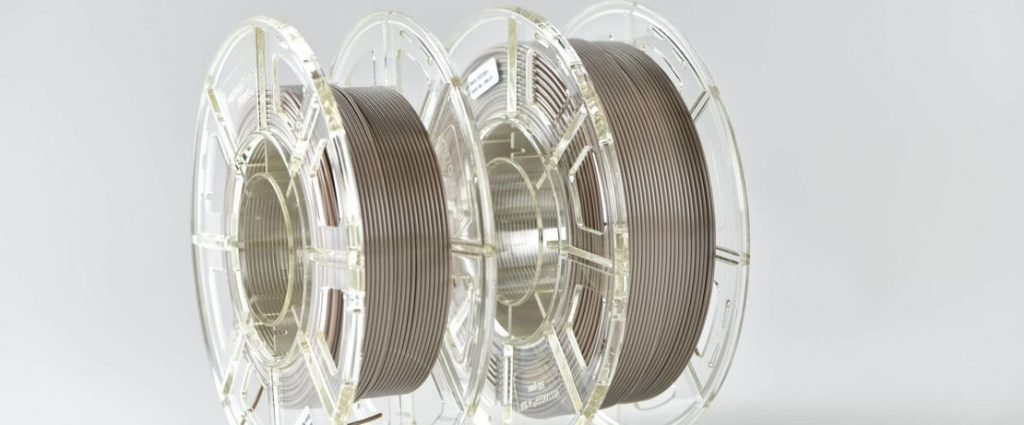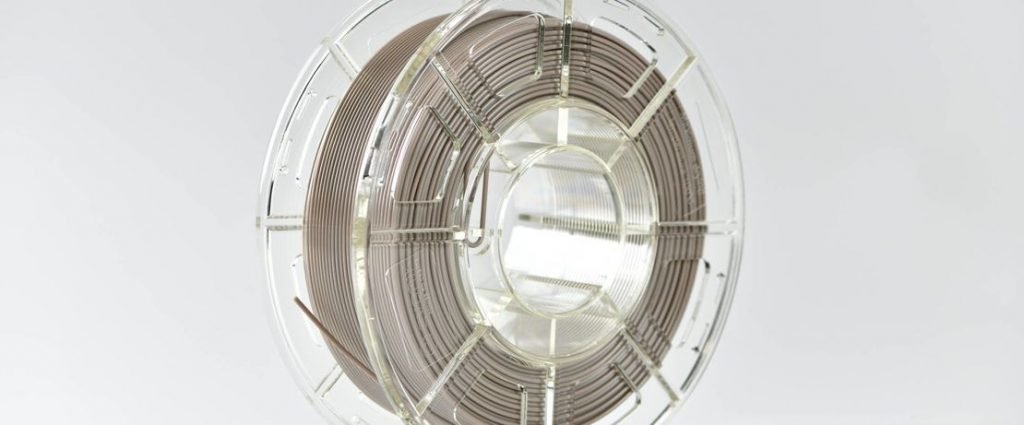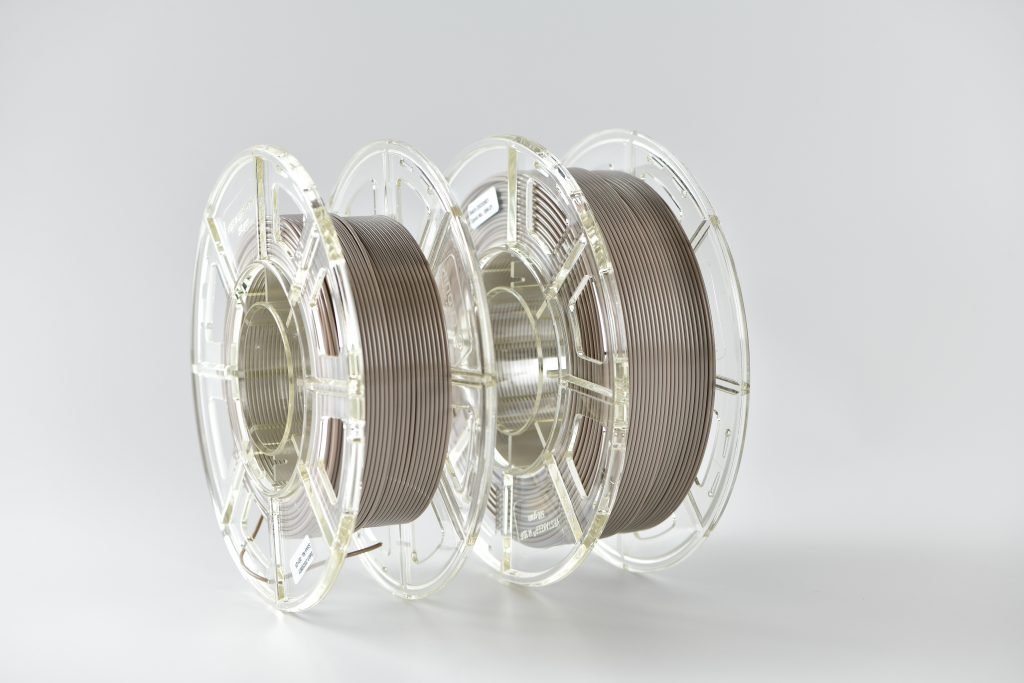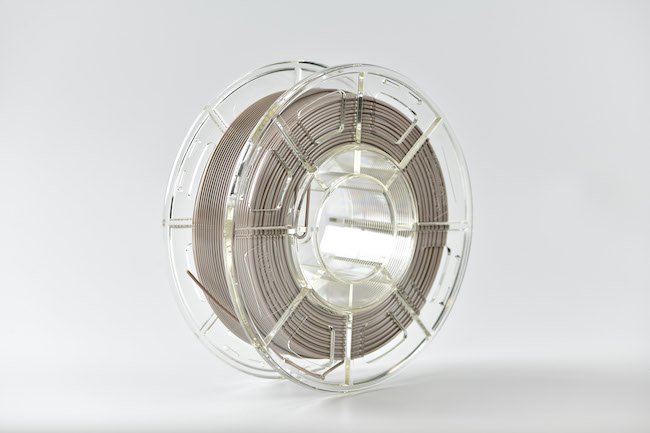Evonik launches new INFINAM PEEK filament for industrial 3D printing
The German specialty chemicals company Evonik has launched a new ready-to-use PEEK filament for 3D printing of industrial plastic parts.
The high-temperature material called INFINAM PEEK 9359 F is compatible with extrusion-based 3D printing processes such as FDM and FFF and is designed as a metal replacement for “infinite” industrial 3D printing applications.
“Following the commercial success of PEEK filament for medical technology, we are now expanding the product range to include an industrial material quality,” said Sylvia Monsheimer, Head of Additive Manufacturing and New 3D Technologies at Evonik.
“We use our innovative strength in polymer chemistry to constantly develop new filaments, powders or photopolymers and bring them to market in order to diversify the material landscape and thus enable new, infinite applications.”
INFINAM PEEK 9359 F High-performance polymer as a metal replacement for the additive manufacturing of sophisticated industrial plastic parts. Photo via Evonik.
Evonik’s 3D printing portfolio
Evonik’s Smart Materials product range includes 3D software and a wide range of polymer printing materials, many of which were renamed INFINAM in October 2020. The INFINAM portfolio includes the company’s impact-resistant PEEK photopolymer (TI). Printing materials for thermoplastic copolyesters (TPC) and amides (TPA), although their biomaterials remained separate from the rebranding.
One of Evonik’s main focuses was the development of its materials for various applications in the medical field. The company thus signed a long-term agreement with the 3D-printed framework developer BellaSeno for the development of 3D-printed breast structures using its RESOMER range of materials.
In February of last year, Evonik developed a bioresorbable Selective Laser Sintering (SLS) powder for the manufacture of 3D-printed implantable medical devices with the potential to prevent bone loss and shortly afterwards introduced a new PEEK filament that is used for medical purposes Manufacturing of 3D printed plastic is certified for surgical implants.
Since then, Evonik has acquired a minority stake in the Chinese industrial SLA 3D printer manufacturer UnionTech, which is preparing the introduction of a number of new formulations in its INFINAM photopolymer product line and, as part of its long-term partnership with the multinational printer HP, also has a flexible TPA special powder Co-branded that is optimized for HP Multi Jet Fusion technology.
Following the commercial success of its PEEK filament for medical applications, Evonik has now taken the step of expanding its PEEK product range to include an industrial-grade material.
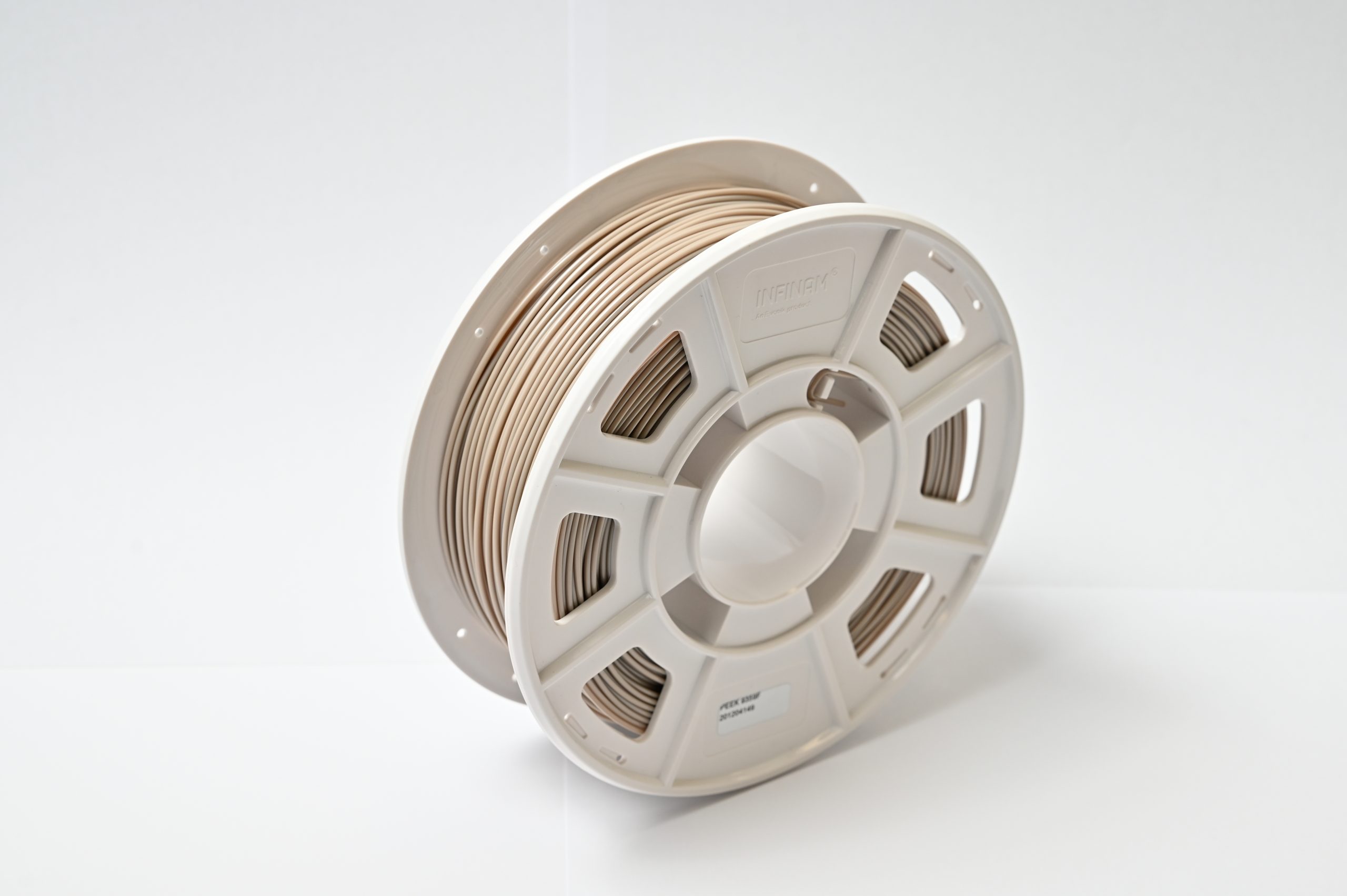
Replacing metal in industrial AM applications
INFINAM PEEK 9359 F is expanding Evonik’s 3D printing material portfolio to include industrial applications, in particular 3D-printed industrial plastic parts. The ready-to-use filament is suitable for use in standard FDM and FFF 3D printers for PEEK materials and has high mechanical strength, hydrolysis resistance and flame retardancy.
Thanks to these properties, the filament can be used to manufacture lightweight, high-performance 3D printed components in the aerospace, automotive, and oil and gas industries. Parts printed from INFINAM PEEK 9359 F can withstand the long-term effects of temperatures up to 250 degrees Celsius and the short-term effects of temperatures up to 300 degrees Celsius, making the material a potential replacement for metal parts in these sectors.
Parts printed with Evonik’s industrial PEEK filament are reportedly 80 percent lighter and 30 percent tougher than stainless steel parts, and at the same time have excellent fatigue resistance. In conjunction with considerable wear resistance and low sliding friction, the properties of the filament make it a suitable choice for the production of lightweight components.
INFINAM PEEK 9359 F has a “natural” color and a diameter of 1.75 mm, which is wound on 500 g spools. The industrial-grade filament complements Evonik’s range of 3D printing materials under the INFINAM brand.
Subscribe to the 3D printing industry newsletter for the latest news on additive manufacturing. You can also stay connected by following us on Twitter and liking us on Facebook.
Looking for a career in additive manufacturing? Visit 3D Print Jobs for a selection of roles in the industry.
The picture shown shows the high-performance polymer INFINAM PEEK 9359 F as a metal replacement for the additive manufacturing of sophisticated industrial plastic parts. Photo via Evonik.

